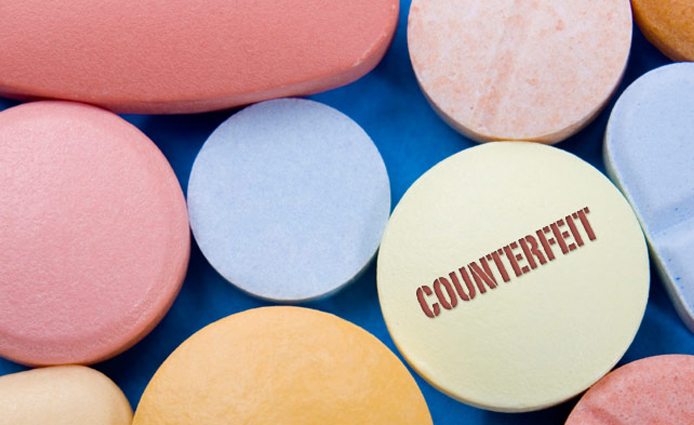
Counterfeit drugs pose a significant public health risk to consumers, as they may lack active ingredients or even contain dangerous substances. While counterfeiting is often more prevalent in developing countries, dangerous fake medication can be purchased online, making this a global concern. In an effort to help consumers and health professionals stay safe from the dangers associated with these drugs, researchers and authentication companies are developing viable solutions to help detect counterfeit products.
Recently, a low-cost, paper based solution, was developed by University of Notre Dame researcher, Marya Lieberman and her team. According to Lieberman, “[P]eople who do not have access to the best quality medicines also do not have as many resources to buy the analytical instrumentation needed to detect the quality problems. Instead of a $30,000 instrument, we have developed a $1 paper card. We designed the card so it would be as easy and inexpensive to use as possible.”
So, how does it work? The paper-based device contains 12 different strips that detect materials found in active pharmaceutical ingredients and common fillers. Colors are formed when the strips interact with the drug’s ingredients. Researchers compare the color pattern from the sample with the color patterns obtained from high-quality pharmaceutical products to authenticate drugs. The comparison can be done by eye or with an image-analysis program on a smartphone.
Lieberman spoke recently at the American Chemical Society annual meeting: “[I]n our tests, the cards find about 95% of poor quality medicines. They can also give false positives, so they are a preliminary screening tool that needs to be backed up with confirmatory analysis.” The cards are currently being used on a trial basis with pharmacists in Kenya, who are gathering and testing samples. The hope is to improve the cards to make them simple enough for patients to use.
Drug authentication technologies, such as paper-based solutions, are an important part of patient safety, and we at CSIP are encouraged by the progress being made in developing and testing them. We will continue to monitor cutting-edge authenticating technologies that make the internet a safer place for consumers and health care professionals to buy safe prescription drugs.
####
The Center for Safe Internet Pharmacies (CSIP) and our 12 member companies have the shared goal of helping address the growing problem of consumer access to illegitimate pharmaceutical products on the Internet. Continue to read this blog for updates on CSIP’s education, enforcement and information-sharing efforts.

